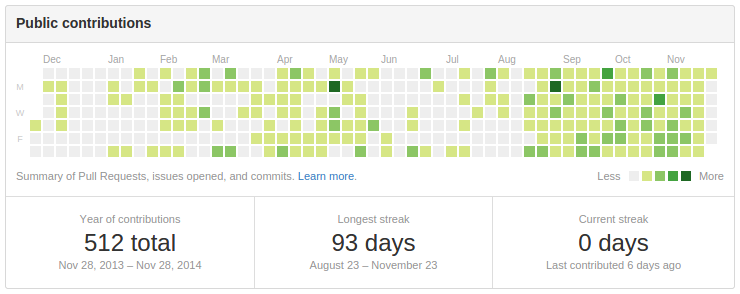Python on AWS Lambda
Sunday, March 29 2015Want to use Python on AWS Lambda? Lambda currently only supports JavaScript via Node, but that shouldn’t stop you from trying.
HTML5 Games with Phaser, Parse, and CoffeeScript
Sunday, February 8 2015A year and a half ago, I spent a week making an HTML5 game called Dave Likes Pizza, despite knowing next to nothing about web development. Not surprisingly, the final product was an abomination of web practices. My coup de grâce was a file of build instructions containing such gems as “use a JavaScript minifier on the contents of the src/ directory” and “copy the following file structure to the remote host.” Even now these lines make me shudder.
AWS Lambda: Testing the Waters
Monday, January 5 2015In a previous post I waxed poetic about the potential of AWS Lambda. Now it’s time to actually use it.
What Lambda Is
Thursday, November 13 2014To quote Joe MacMillan from Halt and Catch Fire, “The computer’s not The Thing. It’s the thing that gets us to The Thing.”
I sense another Thing approaching.
Four Things Computer Science Should Teach
Thursday, November 6 2014I can’t speak for every college in the world when I say that a computer science curriculum, and by extension academia in general, leaves one sorely unprepared for the workplace.
Favicons Suck
Tuesday, October 28 2014Every once in a while I tinker with my website to “improve” it. In the last such attempt at improvement I decided to tackle decent favicon support. Up until then I had been using a base64-encoded 16x16 transparent image, since it saved a request and worked fine for the most part, but UX was severely lacking in things like mobile bookmarks and home screen tiles.
Useful GitHub Commit Emoji
Friday, October 10 2014For a while now users of GitHub have been able to include emoji pretty much anywhere. The problem? There are nearly 1000 to choose from, so which ones are actually useful for commits?
SVG Optimization
Sunday, September 28 2014SVG images are pretty awesome. However, just like anything else on the web they should be optimized for size and displayability, and that’s when things get decidedly less awesome.
But fear not! After reading this post, you’ll be an SVG-optimizing wizard!
strap: Make for Stupid People
Monday, September 15 2014I made this thing called strap. It’s pretty kewl. This is a post about why it was made, how it was made, and what you can do with it.
(Almost) Proper Cross-Browser Timestamps
Tuesday, September 9 2014While making this blog, one of the things I had to do was figure out a way to represent post timestamps. These are used not only for sorting and filtering posts by date, but to display the date a post was written in a pretty, human-readable format.
Webs and Streams
Saturday, September 6 2014Note: This post was adapted from an assignment I had to do for a Systems Design course at college. We were tasked with writing about what we thought were the world’s worst and best designs. Here are my picks.
How I Configured a Blog
Thursday, September 4 2014The blog you’re reading right now was configured 100% entirely by yours truly. I say configured rather than some other verb (like programmed or built) because a ridiculous amount of the work involved configuration — of Node packages, of Bower, of Gulp, of JavaScript requirements, of Less…the list goes on and on.
On Having a Job
Monday, June 30 2014I started programming always thinking I’d eventually have one of those programming jobs. You know, one where you’re stuck in a little cube on some floor in some building with a big shiny metal sign outside that also occasionally makes the evening news.
Big dreams for a twelve-year-old.
Python Antics
Saturday, May 31 2014It’s strange how often I find myself in situations where I have to do stupid things that push the boundaries of whatever languages I am working with. Recently I’ve been doing a lot of Python development, so naturally I’ve also been getting myself into a lot of import trouble.
Obligatory First Post
Wednesday, May 28 2014I’m finally making the move from my old blog hosted on WordPress to this snazzy new Octopress. A few of the reasons why:
- Hosted on GitHub and backed by Git (yay!)
- Markdown for everything
- Shifting focus from game development to more general software development
Hopefully this is the start of something good.
